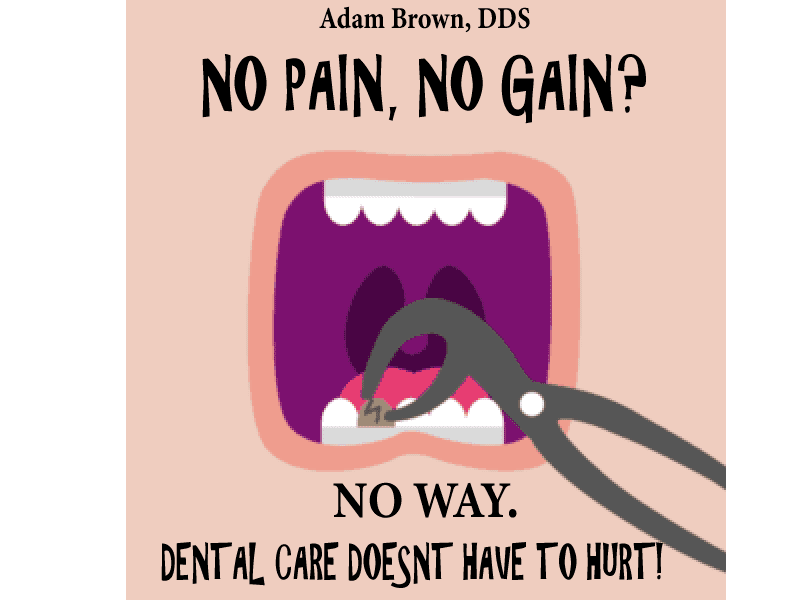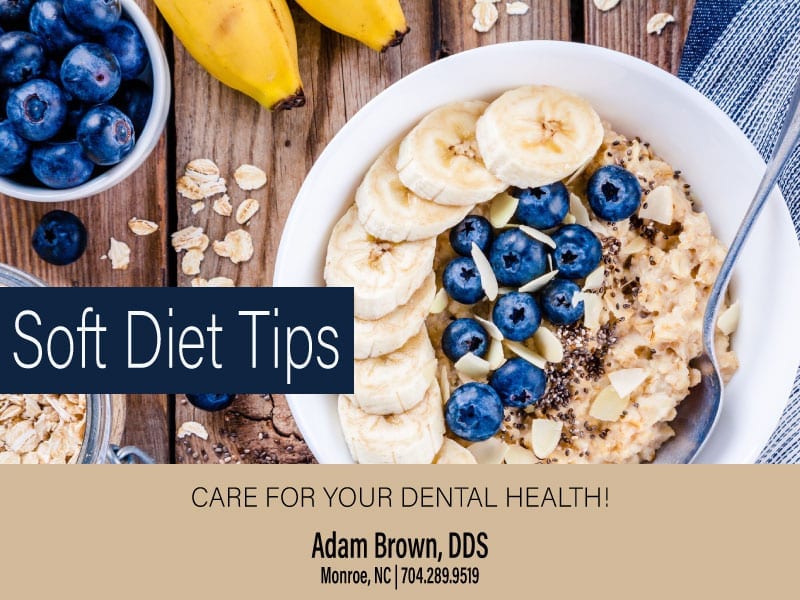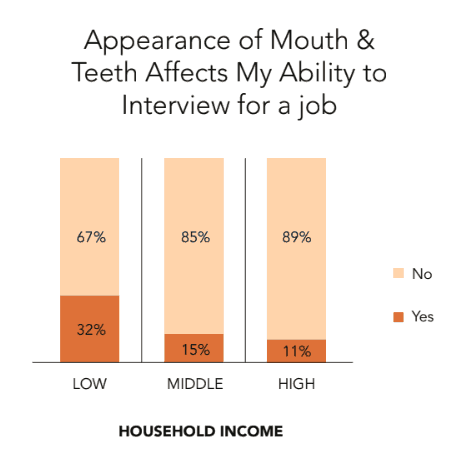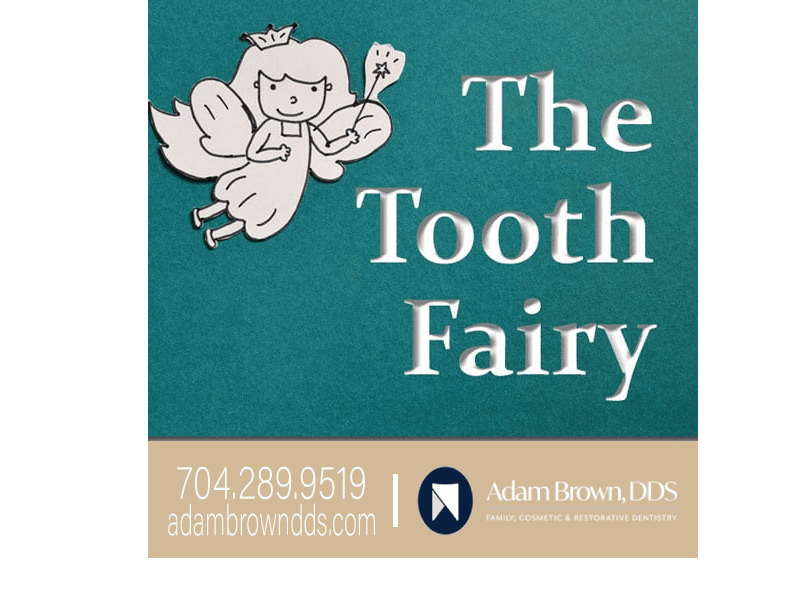Dental Anesthesia Yesterday, Today, and Tomorrow
If you’ve ever undergone a dental procedure such as a tooth extraction or root canal at Carolinas Dental Choice, you’re most likely familiar with — and have been the grateful recipient of — a dental anesthetic. Numbing agents, like novocaine, work by confusing communication between nerve cells so that the brain doesn’t register pain. However, today’s modern medicine hasn’t always been available, and the path to its discovery and use is a sordid one.
Teeth have been causing pain through the ages and remedies to fight the pain are recorded as far back as 2250 BC. A Babylonian clay tablet reveals the recipe to repair cavities — mixing henbane seed and gum mastic. In 1000 BC India, oral care relied on wine. It wasn’t until 1540 that ether was introduced. And while there is no evidence, one can imagine early cave people simple using a large stick to pry out any source of pain.
Early dentistry was commonly performed by barbers. Beginning in the Middle Ages, barbers were performing dental work and surgery in addition to cutting hair and shaving. Blood-letting and leeching, extractions and enemas all were services of the local barber-surgeon. Shave and a root canal? Two bits!
Historical documents from the Wood Library Museum of Anesthesiology detail a Dr. Horace Wells bravely volunteering to inhale nitrous oxide for his own dental extraction in December 1844. Despite nitrous oxide’s reputation as laughing gas, Dr. Wells was a “humbug” during the procedure.

The first nurse anesthetist dates to 1877, but it wasn’t until 1889, at the Philadelphia College of Dentistry, Henry I. Dorr, MD, DDS was appointed as the world’s first Professor of the Practice of Dentistry, Anaesthetics and Anaesthesia.
Dental pain relief developed from the humble beginnings of ether (a pleasant-smelling colorless volatile liquid that is highly flammable) to laughing gas (nitrous oxide) and more recently from ethyl chloride (a gas or volatile liquid) to Procaine (commonly known as Novocaine).
Now dental anesthesia makes what was once a truly torturous process into something that may be simply unpleasant.
Your first experience with dental anesthesia may have been during wisdom tooth extraction (the four hindmost molars which come in during young adulthood) which can cause issues including pushing other teeth out of alignment. Wisdom teeth also tend to be impacted meaning they are stuck just below the gum surface. Nearly 85 percent of adults have had wisdom teeth removed. Another common dental procedure is a root canal, which hollows out a tooth and removes infected pulp inert material.
Dental anesthesia falls into three basic categories:
- Local Anesthesia — Medication is injected into nerves within the gums to numb the area to be treated. This type of anesthesia is commonly used during fillings, treating gum disease, or preparing teeth for crowns.
- Sedation — Administered by inhaling nitrous oxide, also known as laughing gas, or orally in the form of a pill taken prior to the dental procedure, this form of anesthesia is commonly combined with a local anesthetic to help relieve anxieties and reduce pain.
- General Anesthesia — The strongest form of anesthesia available for dental procedures involves intravenous medications that produce a temporary loss of consciousness. General anesthesia is usually only used during extensive oral surgery procedures and requires a medical facility more advanced than a typical dentist’s office.
You may have heard of I.V. sedation and wondered if it were for you. Intravenous (I.V.) sedation has become more common and works well for those with fear of the dentist and dental procedures. It is also ideal for patients whose fear of dentistry has led to a large amount of dental work needing to be completed. I.V. Sedation is also used for outpatient procedures, like colonoscopies. Referred to as “twilight sleep,” the sedation allows patients to wake with little or no memory of the procedure.
While in the United States and much of the developed world there are many options available for safe and pain-free dental procedures, much of the world still has limited options when it comes to oral health care.
According to the World Health Organization (WHO), “In developing countries, oral health services are mostly offered from regional or central hospitals of urban centers and little, if any, priority is given to preventive or restorative dental care. Many countries in Africa, Asia and Latin-America have a shortage of oral health personnel and by and large the capacity of the systems is limited to pain relief or emergency care. In Africa, the dentist to population ratio is approximately 1:150,000 against about 1:2,000 in most industrialized countries.”
This continues more than 20 years the primary care initiative “Health for All,” which has yet to be fully implemented. According to WHO, “in many countries, national capacity and resources — human, financial and material — are still insufficient to ensure availability of and access to essential health services of high quality for individuals and populations, especially in deprived communities.”
The Dental Anesthesiology Research (DAR) Group, based in Alexandria, Va. was founded in 2000. They focus their research in: 1) local anesthesia: anatomy, pharmacology, and therapy. 2) sedation: general anesthesia, deep sedation, moderate and minimal sedation, and, 3) pain management: acute and chronic orofacial pain, orofacial cancerous pain and synalgia.
While those are a lot of big words, the point is that dental anesthesia continues to develop and address more complex patient care including: intravenous and inhalational sedation, sedation in hospital and ambulatory environments, sedation for all dental procedures, including oral surgery, pediatric dentistry, and general dentistry, perioperative patient management: intellectual disability, physical disability, comorbid illness/medical complexity, and dental phobia.
Despite continued advances into pain relief in dentistry, a third of Americans have not seen a dentist in the last year, according to a Gallup-Healthways poll. Many do not see a dentist because of the expense and only wealthier individuals seeking regular dental care, but another reason cited for not pursuing dental care is being the lack of realization that good oral health is key to overall good health. Poor oral care has been linked to heart disease, diabetes, rheumatoid arthritis, and stroke; and research has found that those who suffer from gum disease are twice as likely to develop coronary artery disease. The Mayo Clinic suggests brushing your teeth twice a day, flossing, and eating a healthy diet, along with attending regular dental check-ups.*
While dental procedures can seem scary and overwhelming, advances in anesthesia, options for pain relief during and after procedures, and continuing research to develop additional care methods, are making it easier for you to get the dental care you need.
*Medical Daily.


 Step 2) The implant is uncovered and the dentist attaches an extension, called a post, to the implant. The gum tissue is allowed to heal around the post. Some implants require a second surgical procedure in which a post is attached to connect the replacement teeth. With other implants, the implant and post are a single unit placed in the mouth during the initial surgery. Once healed, the implant and post can serve as the foundation for the new tooth.
Step 2) The implant is uncovered and the dentist attaches an extension, called a post, to the implant. The gum tissue is allowed to heal around the post. Some implants require a second surgical procedure in which a post is attached to connect the replacement teeth. With other implants, the implant and post are a single unit placed in the mouth during the initial surgery. Once healed, the implant and post can serve as the foundation for the new tooth.

